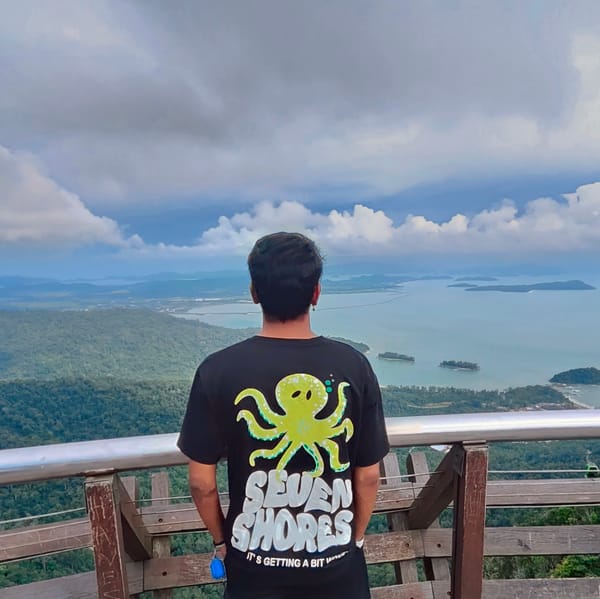Evolving Enterprises as Virtual Organisms
This article explores the metaphorical relationship between biological organisms in nature and groups formed by people - such as families, businesses or associations as Virtual Organisms.
Cells, Organisms, Ecosystems
Individuals as Virtual Cells, Groups as Virtual Organisms
Every biological organism in nature is composed of cells. Thousands of cells work together, each performing different functions and playing different roles, to form a fully functional biological organism.
Just as a biological cells work together to form a biological organism, people come together to form groups such as families, businesses or associations, which can be considered as Virtual Organisms. In such virtual organisms, a single individual plays a specific role, and all persons within the group collaborate and communicate with each other to function as a single virtual organism.
Individuals may move between groups that co-exist
In real organisms, once a cell is part of one organism, it rarely moves to another organism - it lives and dies within the same organism. However in virtual organisms, people as cells move from one organism to another, and play different roles in each organism.
For example, Joe plays the role of “Chief Developer” when he is in office. While going home in a crowded suburban train, he is playing the role of a “commuter” expected to behave in a certain way. Then he plays the role of a “husband and father” when he reaches home. And he’s the perfect “party animal” who cracks great jokes when he’s among his friends.
In most structured virtual organisms like businesses or organisations, roles are explicitly defined and assigned to individuals so as to minimize conflicts, and to facilitate collaboration and communication between individuals.
In unstructured virtual organisms like families or friends, roles are assumed, typically based on culture and convention and are not explicitly defined. New members such as children learn their roles through nurturing and by mimicing their "role models".
Evolving Virtual Organisms
In nature, biological organisms grow with age, and their characteristics change, but their core physical capabilities are determined by their DNA. In virtual organisms, the changes in the organism that occur with age can be much more drastic. It is almost like the organism resembles a different animal in different stages of growth. It therefore resembles the natural process of evolution, where species undergo drastic changes over long periods of time through generations.
Here is a hypothetical mapping of a startup business as it grows:
-
Squirrel: In the early stages of a startup, it can be compared to a squirrel. Just like how a squirrel scurries around gathering nuts and storing them for the winter, a startup at this stage is focused on gathering resources, building a product, and finding its initial customer base. The startup is often scrappy, nimble, and constantly hustling to make things happen. Just as a squirrel collects acorns to store for the winter, a startup gathers ideas and resources to lay a foundation for growth. The company is small and nimble, focused on survival and growth, like a squirrel.
-
Rabbit: Once a startup has established itself and begins to grow, it can be compared to a rabbit. Like a rabbit, a growing startup moves quickly and can be hard to keep up with. At this stage, the startup is focused on scaling and building its team. Just like a rabbit that needs to be able to quickly change direction to avoid predators, startups at this stage need to be agile and adaptable. Rabbits are also known for their rapid reproduction and growth, just as a startup begins to multiply in size and gain momentum. The company may also begin to diversify its offerings and expand its customer base, much like a rabbit branching out to different areas to find food.
-
Gazelle: As the startup continues to grow and mature, it can be compared to a gazelle. Gazelles are known for their speed and grace, and a mature startup needs to be just as nimble and quick on its feet, and remain focused on expanding into new markets and staying ahead of the competition. Like the gazelle, a startup at this stage is fast-moving, agile, and adaptable. It has established a clear niche in the market and is poised for explosive growth.
-
Horse: Once a startup has achieved a significant level of success and stability, it can be compared to a horse. Like a horse, a successful startup is strong and dependable, with the ability to carry a lot of weight. Horses are strong and powerful, with the ability to cover great distances quickly. Similarly, a mature startup has the resources and capacity to expand into new markets and take on larger projects. It may also be able to weather economic downturns and other challenges with resilience and strength.
-
Elephant: Finally, a startup that has become a large and established company can be compared to an elephant. Elephants are known for their strength and wisdom, and a mature company needs to have both of these qualities. Such large and established companies have a strong culture and brand identity, and are focused on maintaining their position as market leaders. Similar to elephants, mature companies are a dominant force in their industry with a solid reputation, a loyal customer base, and the ability to weather even the toughest of challenges.
Ecosystems - Higher Order Virtual Organisms
Just as animals in nature form groups, virtual organisms come together to form higher order virtual organisms. Such groupings can be of two types - transformational virtual organisms and transactional virtual organisms.
Transformational Virtual Organisms
In some cases, virtual organisms come together and transform into a new higher order virtual organism. For example, companies can form such higher order organisms through methods such as mergers, acquisitions and joint ventures. In such higher order organisms, a new legal entity is formed and individual members need to undergo significant transformations. It is tempting to compare such transformational organisms to the biological process of reproduction. But let us not overdo the metaphor :)
Transactional Virtual Organisms
In some cases, individual virtual organisms come together to form loosely coupled higher order groups such as strategic partnerships, alliances, trade associations, consortia, standards organizations, chambers of commerce, business councils, industry bodies or state bodies. In these higher order organisms, the individual member organisms do not need to undergo any transformational changes, and continue to operate as before, but can leverage the higher order organisms for opportunities to collaborate, share knowledge and resources, and advocate for common interests.
Collaboration and Communication - the role of Digital Technologies
The key to the vitality of virtual organisms is collaboration and communication between the individuals or members of the organism. When the organism is small, the individual cells can communicate and collaborate with each other effectively and efficiently without needing any structure or tools. However, as the organism grows and goes through the various stages of evolution, the ability for individual cells to communicate and collaborate becomes increasingly difficult and it results in the creation of silos and boundaries. Each silo may contain individual cells that can collaborate and communicate with each other internally, but communication and collaboration across silos becomes difficult and introduces friction and inefficiencies.
To help the organism to evolve without creating silos and friction between its cells, it requires a structure that allows seamless communication and collaboration. With the advances in digital technologies, this is now not only possible, but a mandatory requirement to allow virtual organisms to grow and thrive.




